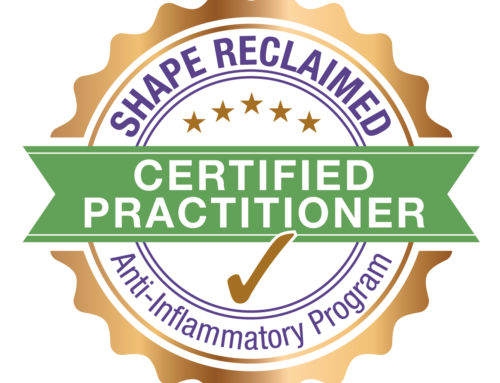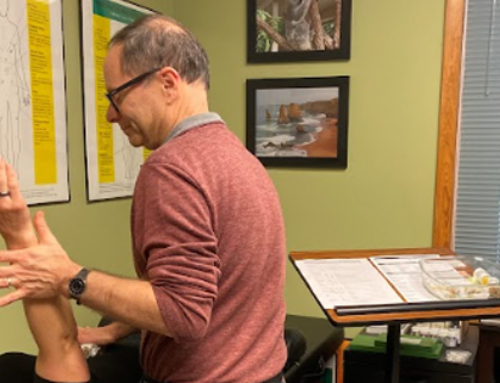Steroid Hormones Part 3: Introduction to Testosterone, Estrogen, and Progesterone
Testosterone
Testosterone is the main male and androgen hormone. It is produced in the testes (males) and in the ovaries and adrenal glands (females). It is also produced by the conversion of androstenedione and at times DHEA. It is a steroid, anabolic, body building hormone.
In both sexes testosterone on a physical level is known to: enhance libido and improve sexual response; protect against heart disease and stroke; increase and enhance energy and stamina; build strong bones; build strong muscles and maintain muscle tone; assist in balance and coordination; normalize weight; improve insulin sensitivity; and help maintain a healthy cholesterol balance. On a mental level it protects against depression, age-related mental decline, and helps to improve memory.
In men testosterone is also needed to achieve and sustain erections and may protect against prostate problems and cancer.
In women testosterone helps to reduce breast tenderness; reverses estrogen-induced breast proliferation; and decreases hot flashes and night sweats.
Estrogen
Did you know that there is more than one “estrogen?” While we use the generic term “estrogen” in fact there are several types of estrogen. It is made by the ovaries in women, and to a lesser degree, the testes in men. Estrogen is also made in fat cells (which is the primary site of production for both menopausal women and men.) Estrogens are steroids.
The three major estrogens are estrone (E1), estradiol (E2), and estriol (E3). Estrone is typically 5-10% of total estrogen. It is considered a “strong” estrogen because of its ability to cause cell proliferation. Estradiol is also typically 5-10% of total estrogen. It is considered the “strongest” estrogen because of its ability to cause cell proliferation.
Estriol is typically 80-90% of total estrogen. It is considered the “weak” estrogen because it does not cause cell proliferation. It appears to balance the cell proliferating effects of estrone and estradiol, thus protecting against their cancer-causing ability.
Following are some of the main functions of estrogen. This is by no means a complete list and there are many still unknown functions of estrogen as well.
Estrogen is known for promoting the female secondary sex characteristics. (Thus, you can now understand how overweight men will develop breasts. Their fat cells are producing excess estrogen!) Estrogen plays a key role in reproduction. It promotes cell proliferation, especially of the uterine lining and breast tissue and is part of the hormone signaling sequence that induces ovulation. It also maintains vaginal lubrication.
It also plays a key role in how we feel as it interacts with the nervous system. It stimulates brain function thereby impacting cognition, memory, emotions, mood, stamina, ambition, pain perception, and sleep.
Estrogen’s emergence at puberty stops the growth of long bones in both females and males and slows bone loss. It can increase body fat, especially in the breasts, hips, abdomen and thighs.
Estrogen helps keep our skin healthy and smooth. It increases production of type III collagen which helps skin heal faster and remain soft and pliable. It promotes the hydration of body tissues.
From a heart health perspective estrogen increases HDLs, lowers LDLs and total cholesterol. It also helps maintain the endothelial lining of the blood vessels.
Progesterone
Progesterone is a steroid hormone produced in the ovaries and adrenal glands during the follicular phase of the cycle and in the corpus luteum during the luteal phase of the cycle in women and in the adrenal glands in men. One of its primary roles is to work with and balance estrogen. It is also produced by the brain and peripheral nerves, and possibly other locations.
Many of progesterone’s functions are highlighted below. However, similar to estrogen, there are still many unknown functions.
Progesterone functions as a precursor for other steroid hormones, most importantly cortisol. It is important to understand that stress and blood sugar handling take priority in the body. Therefore, it is common to see progesterone deficiencies created as it is converted to cortisol to handle the stress response.
It is also critical to understand that progesterone is still needed in healthy amounts in menopausal women. Although ovarian progesterone is no longer produced, the adrenals of menopausal women must continue to make sufficient progesterone to balance the effects of menopausal estrogen levels. This is where the medical world got in trouble with estrogen only hormone replacement therapy by supplying unopposed estrogen and not its balancing partner progesterone.
Progesterone plays an important role in reproduction. While estrogen causes cells in the endometrium to multiply, progesterone balances this effect by stopping cell division and signaling the process of cell maturation, differentiation, and apoptosis (cell death). Thus, it prevents excessive production of the uterine lining. The production of progesterone in the second half of the cycle after ovulation helps signal other developing follicles to stop developing (and thus stop producing estrogen). By maintaining the secretory endometrium it “ripens” the uterine lining for possible pregnancy. If there is pregnancy progesterone maintains and protects the developing fetus; prepares the breasts; and promotes the development of the brain and nervous system.
Progesterone interacts with the nervous system and regulates how we feel. It helps calm the mind, focus the brain, increases libido, and is a natural antidepressant (when in balance with estrogen).
It not only interacts with estrogen, but other hormones as well. It facilitates thyroid hormone function and helps normalize androgen levels (keeps testosterone from getting too high). It has been found to be preventative against breast, uterine, prostate, and other forms of estrogen related cancers.
Some of the other functions of progesterone include: stimulates new bone growth; helps burn fat for energy; a diuretic; and a muscle relaxant.
ONE FINAL IMPORTANT POINT: It is critical to understand that progesterone only functions correctly when it is in the right proportion with estrogen. These two hormones are designed to work together. In a cycling woman these proportions change throughout the cycle. In menopausal women the proportion of progesterone to estrogen will remain relatively constant. When these are out of balance a condition known as “estrogen dominance” is present. More on that later.
Bernard Rosen, PhD is a Nutrition Consultant and Educator. He works with individuals, groups, and at corporations to create individualized nutrition and wellness programs. His office is in Coeur d’Alene, ID. To learn more or to schedule an appointment, e-mail at bernie@brwellness.com, call (208) 771-6570 or go to www.brwellness.com.







